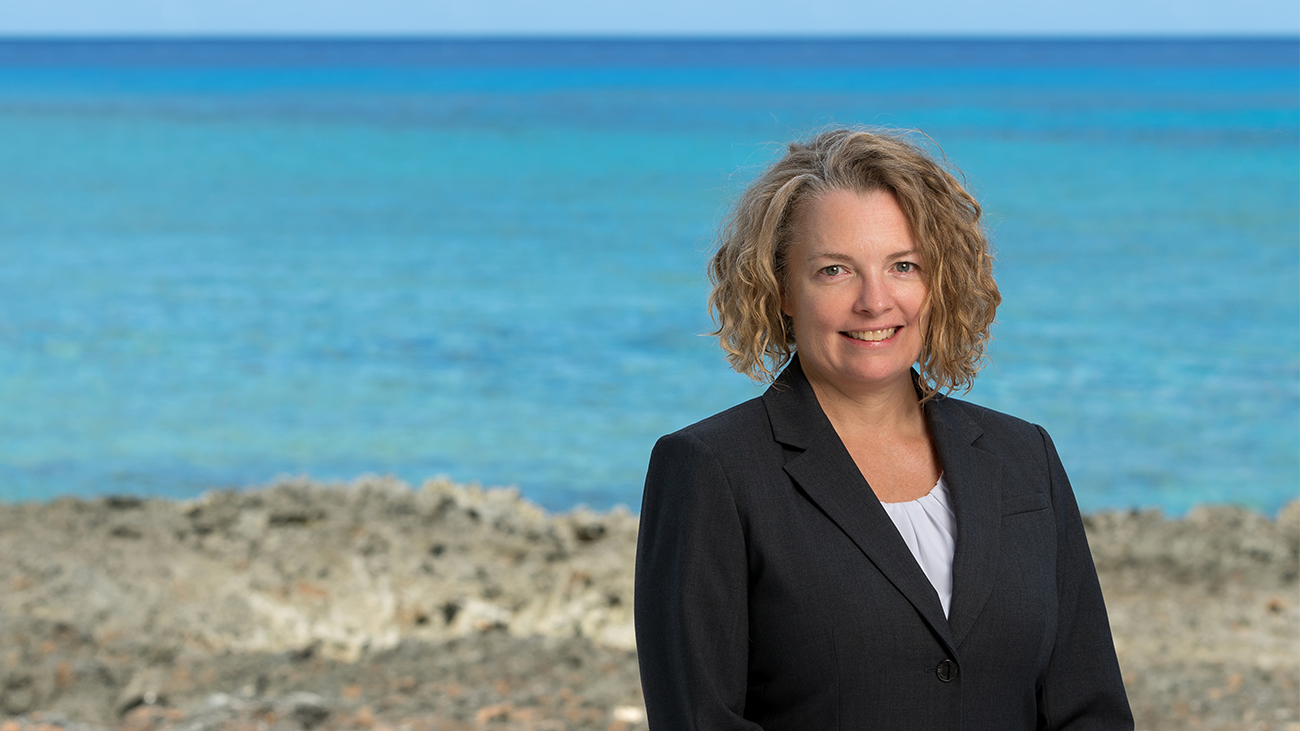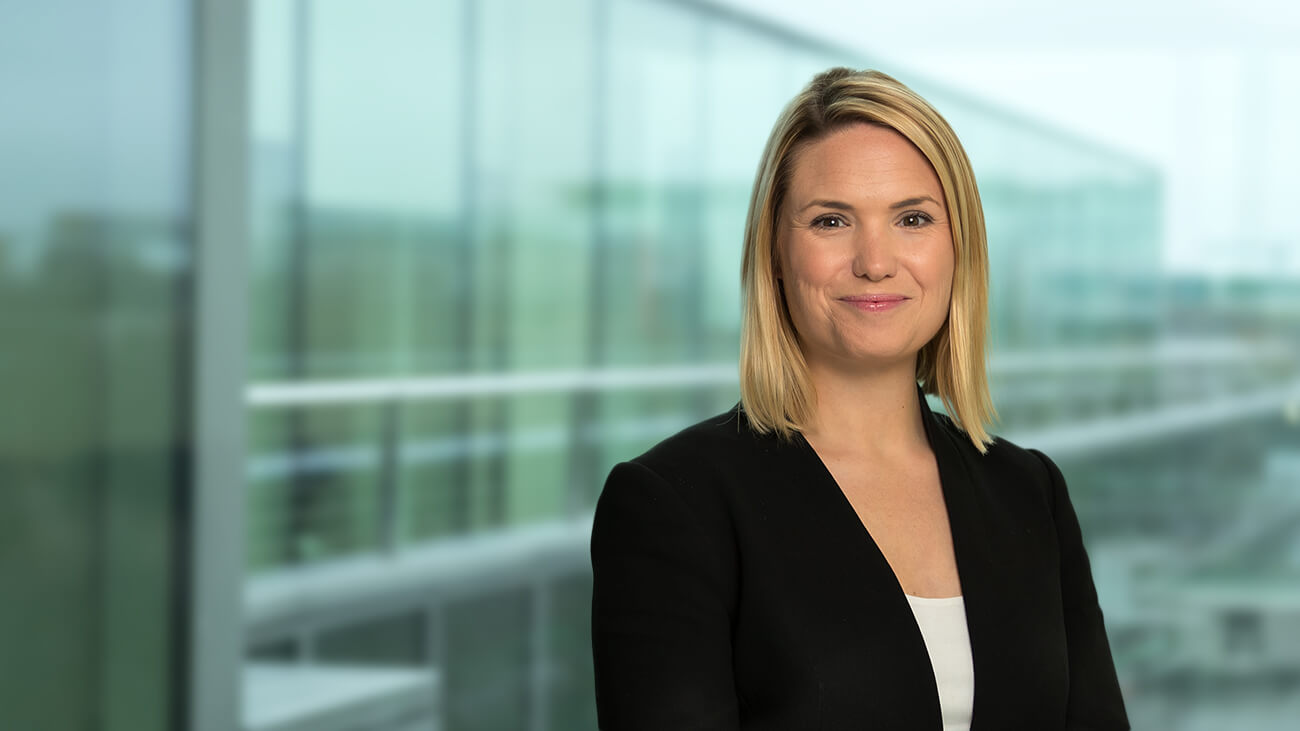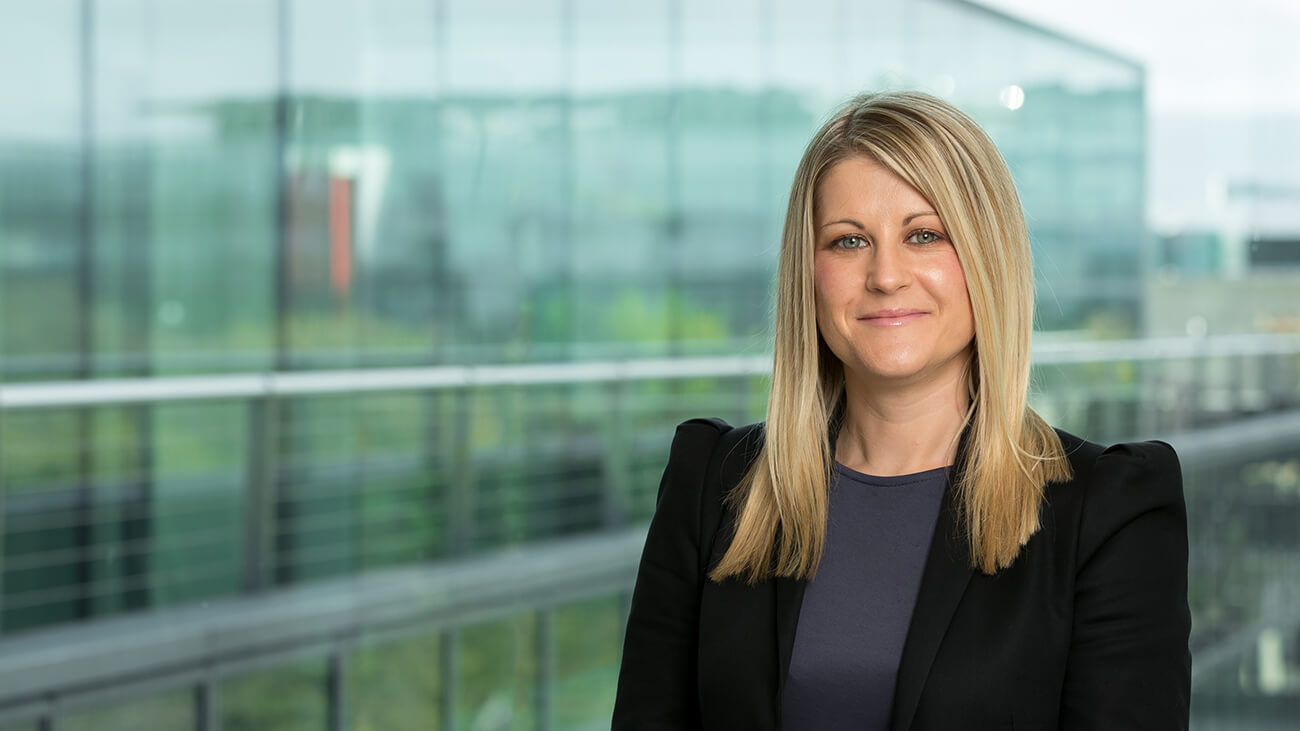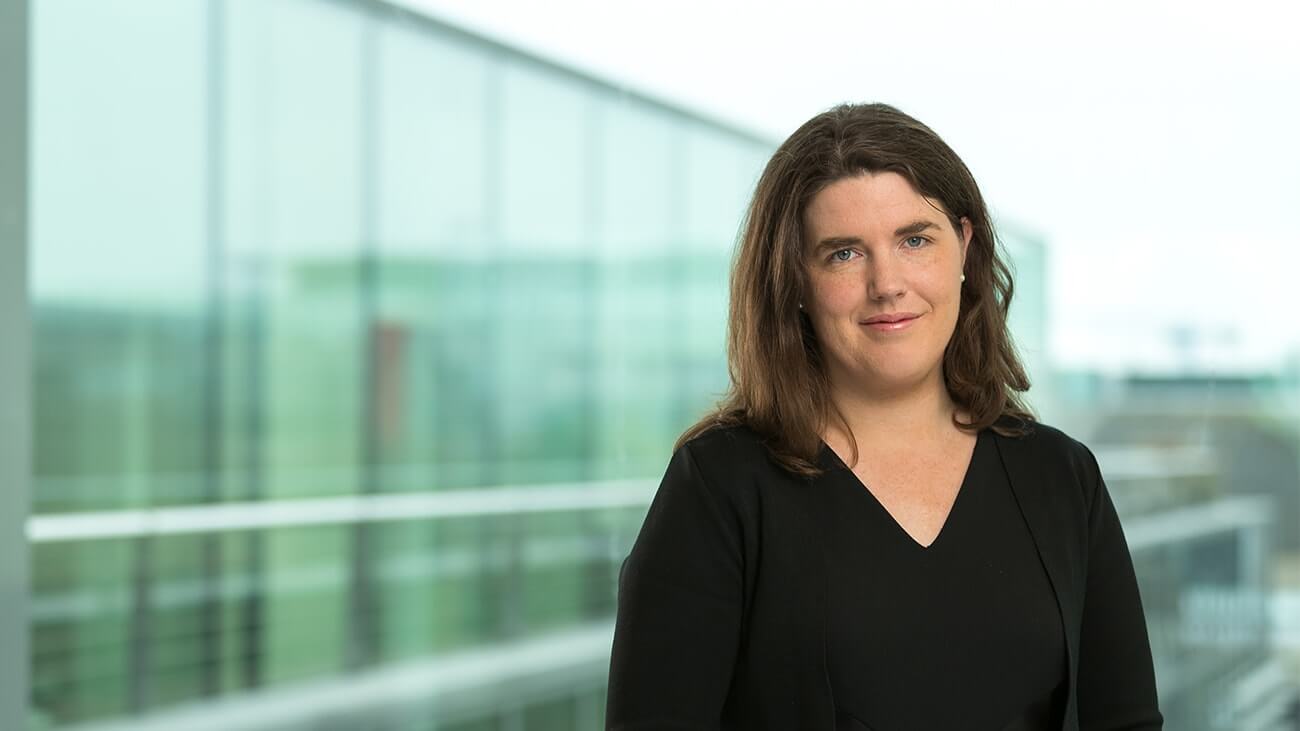Industry Updates
Our Thoughts on the 8th Annual European Fund Finance Symposium
10 May 2024

Jonathan Caulton
Partner
London
+44 7887 421 018
Introduction
The Fund Finance Association ("FFA") hosted its 8th Annual European Fund Finance Symposium at the QEII Centre in London on 2 May 2024. It was a great success and the largest event to date that the FFA has hosted in London, supported by 80 sponsors and attended by over 1,000 delegates from across the global fund finance community. The day was insightful and all attendees had ample opportunity to connect with colleagues and other industry professionals around topical and interesting panel discussions.
Members of the Maples Group's Global Fund Finance team from the Cayman Islands, Dublin, Jersey, London and Luxembourg were delighted to attend the symposium. This note summarises our thoughts and key takeaways from some of the panel discussions.

Vanessa Lawlor
Partner
Dublin
+353 1 619 7005
PANEL: Market Update
The panel discussed the current state of the UK, US, Irish and Luxembourg markets and the impact of macroeconomic conditions on the fund finance market.
Current State of the Market:
UK/US
- Demand for Capital Calls: The demand for new capital calls continues to be strong. Larger fund managers are still capable of raising substantial funds, although the pace of fundraising has decelerated across the industry.
- Existing Facilities: Due to slower exits from investments, existing facilities are being maintained for extended periods.
- Tenor of Facilities: The tenor, or duration, of credit facilities has generally become shorter compared to historical standards.
- Pricing Trends: Over the past few years, there has been an upward trend in the pricing of credit facilities, particularly where more liquidity is required.
- Environmental, Social, and Governance ("ESG") Factors: There have been few sustainability-linked loans. However, there is an uptick in the issuance of genuine green loans that are aligned with Article 8 and Article 9 funds.
- Net Asset Value ("NAV") Facilities: There is a heightened interest in NAV facilities, which are increasingly sought after for capital relief purposes.
- Importance of Ratings: Ratings have become a focal point, especially in the context of club facilities.
Luxembourg
- The current state of the Luxembourg market is generally stable with a high number of subscription facilities deals. There are some NAV facilities in Luxembourg where the security package is one of the most negotiated points. The number of deals is slightly higher than last year.
- Despite an increase of pricing for facilities last year, prices are showing signs of stabilizing There are more discussions on tenor which are shorter with an extension option. One-year tenors are privileged as they give lenders the ability to revisit the facility, the economic terms and the covenants and they require less regulatory capital reserves than facilities with longer tenors.
- There has been a noticeable challenge in obtaining liquidity from banking institutions, which has led to a significant influx of non-bank lenders entering the market.
Ireland
- Continuing on from 2023, Q1 2024 saw mostly subline facilities, with one-to-two-year terms, refinancings and extensions, certain NAV is anticipated although trading volume is not expected to be significant. The majority of lenders were bank lenders, with deals slow to progress. The time lag between fund formation / launch and the subsequent arrangement of a subscription line facility can span several months. This situation is observed across a variety of Irish investment vehicles, including Irish Collective Asset-management Vehicles (“ICAVs”), Investment Limited Partnerships (“ILPs”), and unit trusts, as they engage in transactions.
Impact of Macroeconomic Conditions on Fund Finance Market
- The pace of fundraising has slowed down, which has resulted in a higher concentration of bulge bracket (“BB”) investors on the first day of fundraising.
- There is more demand for separately managed account financing as investors with big chequebooks look for more bespoke solutions.
- Ratings agencies play a pivotal role in the financial landscape, with some lenders can benefit from ratings, though this varies across the market, and who pays (borrowers or lenders) is still up for debate. Last year, Fitch released material on ratings after observing an evolution in the market involving non-US banks, while Moody's published a draft strategy.
- Liquidity has been picking up compared to six, nine months or a year ago, either through new allocations banks have made or due to new entrants in the market.
- Reduced bank appetite has allowed alternative lenders to participate and thrive in the market.
Post-Regional Banking Crisis: 12 Months on
- Focus is very much on building strong relationships with managers and demonstrating support through the cycle. Likewise, managers are increasingly cultivating their bank relationships over time to ensure that key relationship banks will be there when there’s a need for liquidity.
- HSBC acquired SVB UK quickly in March 2023, now HSBC Innovation Bank, which continues to service in the market and to partner with mid-market and PE funds. More heighted disturbance in the US created a ripple effect across the US market, shot up pricing, further constrained liquidity.
Current Market Challenges and Predictions
- There has been increased regulation (Basel and other potential regulatory changes); Basel III Endgame / Basel IV will have an impact on the availability of capital and allocation in US banks and will become more expensive. Banks are still considering internally requirements of Basel IV and impact it will have on capital models.
- Interest rate reductions will drive demand higher, while potentially reducing the supply from Alternative Lenders (Asset Managers) although not as optimistic on rate cuts in the US as we were previously; still cautiously optimistic for an EU rate cut.
- US election year will keep things stable, with no expectation for much change which will encourage continuous fundraising.
- There is ample demand for existing products and innovation to tackle some of the new / novel requests from managers, investors, and more specialised funds.

Sarah Francis
Partner
Dublin
+353 1 619 2753
PANEL: Hot Topics and Trends in Fund Finance
- The panel considered whether the balance of power is moving back to Limited Partners (“LPs”). The panel considered that LPs are looking for more diversification in portfolios and that they want more input into control and governance. In the past some LPs have felt that they have not been heard so are now more vocal and want to be consulted on discussions including leverage at fund level.
- The panel also discussed that the prevailing trend is liquidity. LPs have been suffering net negative distributions and placing pressure on General Partners (“GPs”) to offer them liquidity, LPs or GPs are now looking at various options including fund finance. As M&A activity is still slow, GPs are looking for other ways to give liquidity. Traditionally, GPs would have been focussed on driving distributions but now they are also faced with managing the demands that they are placing on LPs for further capital. In the context of fund finance, GPs are looking to lenders to help them with creative solutions. GPs are also now looking to other pools of capital, for example high net worth.
- Net Asset Value (“NAV”) was also discussed in the context of it previously being focussed on secondaries and private credit but is now being use by PE and infra funds more regularly. LPs are showing an interest in how the facilities work, what are the risks and how are they mitigated. LPs are asking GPs about the use case and why they are beneficial for LPs. LPs are wanting GPs to have more of an interest in their own funds by having greater 'skin in the game'.
- The panel discussed the debate about NAV and where that debate is currently. The panel agreed that NAV is one of the hottest topics out there with a focus on the use of proceeds. Concerns about NAV financings in buyout funds stem from negative media coverage, regulatory issues, and the risks of compounded leverage. Some non-bank lenders are lending large facilities which may be 'cov-lite' or unsecured which can address some of the concerns which LPs might have. NAV is not a single product and there is a diversity of attitudes within LPs too. There is an education process and LPs are asking the right questions of GPs in terms of using them. They sit alongside a menu of options to drive liquidity. Education and communication with LPs are key as is communication with the regulators.
- The panel also considered the evolution of, and trends in, the fund finance market and noted that high net worth is a trend across all asset classes. High net worth has never been the realm of the subline lender, but the industry is going to have to move through it.
- The first phase of ESG loans coming up for refinance in a very different ESG environment.
- Lenders are also dealing with GP consolidation with managers getting subsumed after lenders have built relationships and now a larger panel of banks to choose from. Managers are also looking for relationship lending and want lenders to support them over time, wanting to know that their lender will be with them long into the future.
- Finally, the panel considered what the arrival of alternative lenders means for fund finance. The panel discussed that there is plenty of room for the industry to grow and that banks and non-banks can work in partnership together. There was also a view that non-bank lenders can reduce flexibility for GPs as non-bank lenders may be insistent on a term loan tranche. NAV is a natural fit for private debt funds involving term loans and delayed draws rather than RCFs. There are parallels with the unitranche market. There may also be issues for non-bank lenders in providing multi-currency facilities. The was a view that capital call facilities will remain a bank business, but NAV may be different. For banks the capital call is the entry door for relationships with funds. The most benefit is liquidity.

Ana Lazgare
Of Counsel
London
+44 20 7466 1665
PANEL: Secondaries
- It was interesting to hear the significant growth on the secondaries market and trends on both GP led side and LP led side. The combination of a slow down on fundraising and exits falling have allowed secondaries markets to grow at a fast pace. LPs are striving for liquidity and GPs are required to hold on to the assets for longer because of exit environment is not ideal.
- The volume of the GP led side has outgrown that of the LP led side in the past years (mainly on single assets). The market has seen continuation vehicles taking almost 50% of all the GP led deals and there are more secondary funds across the space.
- We reviewed the market’s transaction structures, where it involved the transferring of the assets into an SPV and taking security over the interests in the SPV and relevant cash account security. There is also a requirement to review the cash-flow profile, particularly where the portfolios have unfunded remainder, there is usually consideration of the granting of security over cash flows and a guarantee by the buyer on those exposures, noting that distributions are still outstripping unfunded positions.
- The panel noted that these extension secondaries are not distressed positions but strong portfolios. The secondaries have been used by some GP blue chips to hold on to assets for another three to five years, mostly used for large-mid caps to increase value and provide liquidity to some LPs.
- One of the panellists reported that the main deal volume has been on buyout and infrastructure assets and few on secondary credit space, with institutions trying to find liquidity in debt funds.
- We are in an interesting market for secondaries; with more types of structures and need of liquidity with lots of potential for growth.
PANEL: NAV Lending to Credit Funds
- We had a very insightful panel with different background and perspectives. The panel overview was on an established market, covering largely diversified funds with senior secured loans.
- The panel discussed the main advantages for this product, which include (i) a highly diversified portfolio which also represents high returns and a meaningful yield, (ii) the tenor is around five years or longer which provides security of capital and (iii) for lenders, it could be quite cheap because of the securitisation options (although this could mean more regulation).
- The market has evolved on lending to debt funds with private debt funds with senior secured credit exposures. There is a significant demand on alternative credit funds or funds with different types of structure (real estate debt, infra, alternative credit).
- It has been mainly driven by investors who have preferred the higher returns. Hedging plays an important role; particularly when you have exposure to different countries and currencies which naturally hedge such asset and creates benefits from an IRR perspective. In terms of performance, the manager selection is paramount.
- However, one of the negative factors is the reporting requirements and conversations around increasing concentration limits. As well, one of the main challenges particularly for bank lenders is tighter bank regulation.
- There is an increase of alternative lenders with lesser balance sheets with interesting solutions. Credit funds typically have inherent cash flow from their underlying assets, making them more suited to revolving NAV facilities.

Arnaud Arrecgros
Partner
Luxembourg
+352 28 55 12 41
PANEL: NAV 1.0
- The panellists discussed which purposes the market is currently putting NAV facilities into use. There was a consensus that NAV facilities tend to offer a lot of flexibility, as they may be put into use for various purposes, be it, for instance, to finance the redeployment of investments, the exists of limited partners, or distributions.
- The panellists noted the increasing popularity of NAV facilities on the market, which are now often used to finance all types of asset classes and became a popular tool used by private equity funds (when they were originally used mostly by debt funds).
- The active role played by alternative lenders (debt funds and insurance companies) over the past two years in this field was also highlighted.
- The panellists further exchanged views on the perception by the LPs of these NAV loans and how such matter remains a point of focus. While LPs appear to be nowadays rather comfortable with NAV facilities which purpose is the redeployment of investments or follow-on investments as they then fall within the funds' investment strategy, concerns are still expressed in the context of NAV facilities which purpose is to finance distributions, for instance.
- The above explains why the insertion of provisions in LPAs whereby the consents by LPs to the use of leverage for various purposes is expressed is now considered. On the matter of the constitutional documents and given that the borrower often is a SPV subsidiary wholly owned by the fund, it was reminded that it is necessity to check that the SPV's constitutional documents include all the necessary standard wordings on the ability to borrow and incur indebtedness, the granting of security interests and guarantees are effectively included and that neither such constitutional documents or any other organisational documents or agreements governing the underlying assets (shareholders' agreements for instance, especially where the SPV is a joint venture entity), include any obstacle or limitation to the granting of such security interests or their effective enforcement.
- While borrowers would typically insist on the flexibility being the key feature of NAV financing arrangements, the focus on the lender side is the collateral, and the current approach being currently to try and take direct security on all direct assets, to the extent possible and available (which was not necessarily true in the early pre-pandemic phase). It was noted that given the variety of asset classes and types of NAV facilities, there wasn’t a one size fits all standard security package, but that typically, most lenders would expect to take security over the following assets, if possible: (i) bank accounts over which the distributions are received, (ii) equity interests in the borrower, (iii) receivables and (iv) a guarantee or equity commitment letter from the fund to support the obligations of the SPV in case it is the borrower. However, the above may not always be possible as a result of (i) existing complications challenging potential enforcement depending on where the secured assets are located or the presence of minority interests or (ii) the prior granting of security interests to other creditors (for example to secure credit lines at the level of the PropCos with the associate risk of a change of control upon default). In any case, lender’s concern will try and take security as close as possible to the assets.
- It was also noted that lenders will try and structure the security package with a view to allowing for as many exit strategies as possible, ideally and will instruct their local counsel accordingly.
- On the perspectives for the next twelve to twenty-four moths, the panellists expect to see more hybrid facilities (that are often cheaper and therefore more acceptable to LPs) and NAVs on single or concentrated assets, more credit funds lending into the NAV space. There was a consensus amongst the panellists to call for education on the subject for the LPs, which may go through a more subtle classification of these facilities, as the NAV facility category include a wide range of very different types of financing; a distinction between facilities aimed at adding value (follow on investments or redeployment thereof) or value erosion (facilitating distributions), for instance, which is perceived very differently by the LPs, would be welcome.
Laura Hendrick
Of Counsel
Jersey
+44 1534 671 324
PANEL: Capital Call Facilities
This insightful panel discussion focussed on the current factors impacting the most staple of fund financing facilities, the capital call or subscription line credit facility. In general, there was a strong consensus on the panel that the fund finance community is very innovative and good at delivering solutions where challenges arise because of market conditions or other external influences.
- Despite fundraising having been slower than in previous years there has been an increase in demand for capital call facilities. This general theme arose in many panel discussions throughout the conference.
- Deployment has slowed to an extent in certain asset classes, for example, real estate.
- Lending banks have struggled somewhat with their capital allocation for fund financing but there is more optimism for the upcoming year.
- The current fundraising environment is leading to lenders adapting existing subscription line products to provide refinancing options where, for example, funds have not closed.
- This has influenced pricing, credit process and day-to-day operation of facilities for lenders.
- Basel IV is going to be a turning point for the fund finance market. Addressing the new requirements is being approached and interpreted differently by certain lenders. Securitisation is one option lenders must optimise balance sheet management, together with use of ratings and significant risk transfer structuring. Please see our coverage of the Securitisation, Risk Transfer, Ratings panel below.
- There have been some large facilities closing with ratings, but we should expect to see more of this in the future. Rating facilities will open up appetite for some institutions to lend and improve attractiveness for syndication which should increase subscription line liquidity.There continue to be a number of challenges including getting an ESG model to fit for a fund as a whole rather than just a portfolio investment. It can also be difficult to ESG with lender requirements. LPs are not as focussed on ESG for fund financing as yet, but we should watch this space as more and more funds are focussing on ESG measures.
There will, of course, always be a place for subscription line facilities given that they form an integral tool in the management and operations of funds by GPs. The geographic reach is encouraging with all US funds now actively using capital call facilities with popularity for them having peaked in Europe also despite the relative increase in pricing.
Looking forward: liquidity issues should begin to ease as the landscape for fundraising improves. It will be important to ensure there is adequate liquidity when fundraising levels normalise. GPs will be looking to maintain good relationships with subscription line lenders who offer good all-round solutions, including on pricing. The most flexible lenders will stand out from their peers in coming years. Optimism in the wider market is increasing.

Julia Cornett
Partner
London
+44 20 7466 1610
PANEL: NAV 2.0
- We had a lively and informative panel discussed the evolution of NAV. NAV 2.0 is more sophisticated than the product offered five years ago, with a wide range of bolt-ons.
- NAVs can be used throughout the life of the fund. The panel discussed how structural and documentation issues arise as NAVs may have a substantial volume of assets. Further, the fund documents may be based on precedents from over a decade ago, which may not be clear as to implementing financing as more recent fund documents. There was acknowledgement that every fund is different, and every NAV is different.
- The panel noted there is wider market adoption of NAV financing, larger syndicates and more people coming to market. As the transactions get more complicated, there are more and more teams of experts involved to get their multi-disciplinary expertise, and to work through the regulatory treatment. It’s a dynamic process and product. It was noted that some lenders have different teams dealing with varying aspects of the deal, where it would be beneficial to all parties to have a dedicated team dealing with NAV financing.
- Overall, sponsors want ease and speed of execution. They would prefer unsecured or security-light transactions. If structures can develop to be more light touch, it would benefit the whole market.
- Further, it was noted that borrowers are facing pressure on reporting, which has an impact on the type of product they look for in fund financing. It is important to know what is being put in the documentation and what borrowers can track, where the information will come from and what they can report on.
- The panel noted one trend in syndication was the tension between sponsors wanting to know who their lenders are, and lenders wanting to put in back-leverage. The transfer of debt is not the issue so much as the disclosure of information. There was a reminder that sponsors would generally be more amenable to discussions around sub-participations if the conversation was had upfront, rather than before closing.
- There was one word of caution around the need for borrowers to be careful with innovation, and also choosing experienced lenders, ensuring open lines of communication, because if there is an issue on one facility, regulatory scrutiny will follow for the entire industry.
- Overall, there was optimism. The panel agreed that this product is not going to go away. People will continue to get comfortable with this product through its evolution, especially as there is a continued need for liquidity, with funds holding on to assets for longer periods.
Lucy Sleep
Consultant
London
+44 20 7466 1638
PANEL: Lender Landscape
- Increased Competition for Banks: There's a fast-paced growing evolution in lending with new non-bank entrants in the marketspace and ever more present requirements for innovative and diverse liquidity solutions to satisfy the vast array of expanding borrowing requirements and demands.
- Early and Continued Discussions are Key: The lender / borrower relationship is critical to ensure that the parties understand each other's businesses, perspectives and future requirements and developments. 'Transparency' within the relationship was a word that crept up several times during the panel particularly as the borrowing demands evolve during the lifecycle of the funds and general partners are looking for diversifying later down the line.
- ESG on Banks' Radar: Less talk and more action as the last 18 months have seen a shift towards further engagement from managers on this topic with ESG included in initial discussions, terms built into original credit and refinancing arrangements and banks setting up or expanding dedicated ESG desks.
- NAV v Subline Lending: Banks usually have different teams for NAV and subline lending as they require differing skillsets. It's therefore crucial they have effective client relationship managers to ensure optimum communication between the teams to be able provide the appropriate borrowing solutions.
- Adaptation, not Credit Loosening: Adapting to the changing demands of modern funds requires banks to move away from their comfort zones. It's not credit loosening because general partners are willing to include applicable conditions to allow previously unacceptable borrowing terms (e.g., inclusion of high-net-worth individuals or feeder funds in the borrowing base).
- New Lending Entrants Advantaged: Less onerous regulatory requirements on non-banks have seen more third-party lending. For example, insurance companies are increasingly in this space and funds providing lending to other funds. Traditional bank balance sheet limitations have meant more syndications and potential securitisations. Is there friction to come? Currently the jigsaw pieces fit in the relationship between banks and third-party lenders working together. Will this continue with banks' frustrations at the ever-increasing regulatory environment?
- Ratings: Ratings agencies are now involved in this space. Questions continue in this developing area as to how ratings will evolve. Who will pay ratings agencies' fees, what will ratings reports look like, will ratings be public or private, solicited or unsolicited… with securitisations on the horizon, the f is definitely a 'watch this space' topic.
- Outlook: Demand for fund financing will continue. Regulation is by far the biggest challenge for banks with Basel IV, CRD VI, and other regulatory requirements significantly affecting operations. Borrowers' focus, as ever, is on pricing with high reference rates taking up most of their costs and no immediate sign of coming down. Big sponsors will continue to get bigger, and we'll see increased syndication. Ratings will grow more common place, with continued evolution of liquidity providers and solutions.
Arnaud Arrecgros
Partner
Luxembourg
+352 28 55 12 41
PANEL: Legal Update
- The panellists discussed the latest trends and updates on the fund finance market from a legal perspective.
- On the subline front, the panellists agreed that there hadn't been many changes lately. It was merely noted that the product is becoming commoditised and that more ratings requirements are being observed.
- However, regarding NAV facilities, much progress has been made since the first NAV facilities implemented by funds in Luxembourg (in 2020 for Apax on the panel), which at the time were very challenging from a legal and tax perspective to implement as the funds' structures weren't fit to such financing arrangements' requirements. The sensitiveness of some LPs about these NAV facility arrangements still was noted.
- The issue comes up when the need to amend the fund documents, and notably the LPA, is raised. Most often, to the extent private equity funds are concerned, the LPAs are generally silent on NAV facilities generally, as borrowing related provisions typically only envisage incurring indebtedness at the level of the fund itself. However, given LPs' nervosity about NAV facilities, and their lack of understanding of how such financing arrangements operate and will be used in practice, it is now most often impossible to introduce major changes to LPAs' terms, and the approach generally taken by the market is to get comfortable with the limited LPA provisions as they are. This is a very different environment than the one that prevailed a few years ago when standard LPA provisions were shaped to adapt to subline facilities constraints, with a much more favourable fund-raising environment and the ability for sponsors to push for more credit favourable amendments in the fund documents.
- Among the hot topics on which the focus is applied in current transactions, the panellists mentioned the following topics:
-
- The lenders' ask to obtain the LPs' waiver of defences and counterclaims is in most cases something that is conceded. However, issues may come up when it comes to sovereign investors or international organisations, which cannot depart from their own policies, and notably the requirement that draw down notices be signed by authorised signatories previously identified approved. This may require lenders to provide the same incumbency and specimen signatures to such investors as the general partners would do. Particular attention should therefore be paid to side letters.
- The key concern around delegation of drawdown powers, depending on whether such powers remain solely exercisable by the general partner, or whether such powers were delegated to the AIFM, in which case the AIFM, as key decision maker, may be expected to become party to the security and finance documents, or provide consent and waiver letters.
- The need to keep an eye on the depositary agreement and check whether depositary’s consent is required for the purpose of taking security over the collateral account, or whether a duty of information in favour of the depositary is triggered by the entry into and execution of the finance and security documents.
It is strongly advised to identify and circumvent the above issues as soon as possible during the transaction.
- The amendments introduced by the Luxembourg law of 21 July 2023, whereby the regime applicable to collective investment undertakings governed by Part II of the dedicated law of 17 December 2012 was rendered more flexible and modern, were praised. In particular, Part II funds, which could only take the form of a corporation (public limited liability companies – SA) may now also be set up as partnerships (partnerships limited by shares - SCA, common limited partnerships – SCS, or special limited partnerships - SCSp). Partnerships are perceived as a much better choice for these fund structures, as this circumvents the issues resulting from the extensive powers granted by operation of law to the shareholders in a SA.
- The panellists also hinted at the upcoming amendments to the AIFMD ("AIFMD II") (adopted on 26 February 2024, and which will need to be transposed by the Member States within 24 months), and whether the fund documents may need to be amended at that point. One of the changes to be introduced by AIFMD II is the concentration limits which will now apply to loan origination in the context of single borrower exposure and leverage (relatively high) thresholds for loan-origination by AIFs. It is expected that these will cause the need to amend the LPAs and more broadly, the fund documents, to reflect the same. This will further increase sophistication of the applicable legal framework and the panellists noted the trend among the largest investment funds to hire fund finance special counsel.
- As a conclusion, the panel praised the exciting growth of NAV facilities in the fund finance market, and the fact that LPs tend to be more inquisitive of the topic (also as they tend to note the relative high returns in an otherwise low interest rate environment). The panellists expect to see a growing demand for NAV facilities to meet the funds' needs, while the market is getting increasingly comfortable with such type of financing arrangements. They called for more education towards LPs on the subject and would welcome a more subtle sub-categorisation of NAV facility types.
PANEL: GP Focus
The panel considered how relevant fund finance was in the GP space, the challenges they faced in respect of both NAV facilities and subline facilities.
General Observations
- GPS are increasingly engaged with funds finance, and it is no longer a side line anymore, as funds have different needs at different times, it is a full time find appropriate funding.
- GPs are not looking for one or two facilities but five or six, each different tailored to their LPs needs. In particular, some look for an evergreen strategy while some seek a clean down after 6 months.
- GPS are looking to build long term relationships with lenders who understand their long-term requirements and further alignment of interest is required. GPs need to understand the potential and constraints on lenders, but banking needs to understand the strategy of GPs and the solutions they can offer.
- Beauty of fund finance is collaboration and how institutional financing can complement Bank funding.
- Innovation is required to meet GPs requirements.
Observations on NAV Facilities Included:
- The cost gap between subline financings and NAV facilities has narrowed so it is easier to justify the case for NAV facilities to LPs and NAV is very useful for LPs who need to release liquidity to recycle cash into the platform.
- NAV facilities filled the liquidity gap in 2023 but there is a need for innovation in this line of financing and GPs need to grow to tap into the NAV market.
- Transparency with LPs was essential when putting in place a NAV facility.
Observation on Subline Facilities Included:
- Perception the market was lucky in 2023 that demand dampened given liquidity challenges facing banking. In general, as the market is bank led, it is susceptible to challenges and there is a need to proactively address innovative solutions rather than wait for stressors to prompt action.
- Banks are restricted with requirements such as ratings and requirements in respect of the co-mingling of assets.
- GPs looking to put a subline in for first investment, but challenge is to transition smoothly from subline to Nav facilities
- Consideration was given to the potential impact of short loan terms, if there is a liquidity crunch a lot of sub lines will be in trouble as refinances are more stressful as new facilities noting that NAV finance deals are usually longer terms of 3- 5 years.
- An umbrella subline facility similar to an ISDA facility would be welcome
Paul Burton
Partner
Jersey
+44 1534 671 312
PANEL: Securitisation, Risk Transfer, Ratings
This exciting panel considered how relevant securitisation is going to become to the fund finance market in view of: (a) the significant future demand for fund financing (particularly subscription line and NAV) borrowing; and (b) the regulatory landscape which fund finance lenders (including investors in fund financing activity) will become subject to under Basel IV.
Some interesting observations:
- Own Asset Class: Fund finance should be its own asset class for securitisation purposes.
- Size of Market: More than US$850 billion in 2023, is huge for the global loan market to absorb.
- Regulatory Landscape: As this evolves and regulators becomes more interested in fund finance activity, lenders are most likely going to have to report on fund financing activity.
- Securitisation: provides a flexible form of alternative financing to subscription line/NAV.
- US Banks: regulatory capital challenge where 100% risk weight allocated to facility size.
- Europe Banks: regulatory capital challenge is more to do with risk limits.
- Ratings and SRT: The advent of these offer solutions to the challenges presenting as they help banks to maintain or increase fund finance facility/liquidity volumes.
- Fund Finance Securitisation 2023: US$12 billion worth of subscription line credit facilities were subject to SRT / synthetic securitisation. The panel expect a larger amount of SRT and securitisation activity in 2024. Some banks are using securitisation to reduce level of capital allocation to subscription line lending. European regulators may not allow this forever.
- NAV cashflow based type loan structuring is, conceptually, and very similar to securitisation.
Other securitisation focussed items discussed by the panel were:
- Collateralised Fund Obligations: provide the ability to securitise the portfolios that LPs have on their books. This can be done synthetically or conventionally.
- Ratings: Ratings play an important role in securitisation and rating methodologies have been published by a number of major rating agencies now. Rating provides transparency on syndicated deals. Ratings for NAV facilities look at the leverage of the fund (including the value of assets in a stressed scenario) and also seeks to understand the quality of the GP and track record of their funds. Ratings for subscription line is focussed on the LPs ability to fund commitment, assess credit quality of investors and therefore the fund etc. Some banks can use private ratings others prefer or are required to get a public rating.
- Rated Feeder Funds: There has been an increase in use of these most often for private debt funds. They act as a vehicle that will feed into the main/aggregated fund and are often levered. It is common to apply a NAV rating methodology, but rating agencies will look through to the assets and debt at the level of the fund. Cashflow considerations at rated feeder level are important.
In general, the panel agreed that securitisation is a way to manage risk and also provides an excellent opportunity to solve the liquidity recycling issue in the wider fund financing ecosystem. More standardisation on information deliverables and terms for subscription line, NAV and hybrid credit facilities will help in executing securitisation transactions in the fund financing market.
Robin Gibb
Associate
Cayman Islands
+1 345 814 5569
PANEL: Emerging and Continuing themes in Fund Finance
- The panel discussed several overarching topics affecting the fund finance industry, ranging from the impact in the market of acquisitions in the private equity and private credit space to complexity around NAV facilities and the future impact of AIFMD II on the fund finance market.
- The prevalence of mega funds is only being increased by consolidation in the market. These large funds are requiring increasingly larger facilities, resulting in a move towards greater use of syndicated loans.
- From a lender's perspective, the acquisition of managers by third parties is seen as a positive as it can increase the bank's confidence in their customer as a third party has analysed the target and deemed it to be a safe acquisition. Being acquired by a larger parent company also provides comfort if there is greater regulatory oversight of the manager.
- The panel moved on to discuss the current difficulties in raising capital and the pattern of launching a fund with a very concentrated investors base initially and a more diverse base subscribing on subsequent closes. A subscription line facility is taken out with that initial concentrated borrowing base but with there are mechanics built in to manage the broader investor base during the life of the loan. This early-stage sub line assists the GP in not needing to call too heavily on the initial few investors and rather calling to repay the borrowing from a wider investor base in due course. However, increased interest rates are making the use of a sub line facility less economical once the fund's final close has occurred, where it becomes is cheaper to draw from LPs.
- There is an ever-increasing use of NAV facilities, and these are becoming more and more complex as the market matures, perhaps with Europe leading the charge and the USA in hot pursuit. NAV products are being designed that adopt features from other forms of lending to offer bespoke solutions to borrowers.
- The announcement by Institutional Limited Partners Association (“ILPA”) of their proposed guidance on the use of NAV facilities will provide an interesting view on how certain LPs view these products. LPs are now significantly more sophisticated, and this may lead to a consolidation in the market of both the managers (due to due diligence analysis and processes to report back to LPs) and the form of NAV loans being used (due to LPs power to drive the LPA terms).
- The panel touched upon a trend of more and more lenders offering a NAV product due to the prevalence and commoditisation of the subscription line market. Having achieved internal comfort with sub lines, certain lenders are wanting to support their borrowers through the full life cycle of the fund but overall, it is still a bifurcated market with a minority of lenders acting in the NAV space.
- This gap of traditional lenders in the NAV market is providing space for alternative lenders to enter the space given the higher margins available than on sub lines. Alternative lenders may also have more specialised teams with the specific skill set to analyse the underlying investments.
- Concerns were raised on the impact of AIFMD II and changes to fund structures, with a possibility of more SMAs being used (to not treat the investment vehicle as a fund that pools multiple investors together). This will impact the subscription line market due to lack of diversity in investor base.
- The panel concluded their discussions by addressing the increasing prevalence of rating subscription lines. The improved capital treatment for the bank will hopefully mean a lower cost of borrowing for funds. Ratings are not required by all banks, but with the rise of the mega funds and subscription lines being syndicated banks may choose to rate to increase the syndication pool. This must be balanced with any concerns by GPs as to the level of disclosure to ratings agencies and whether the rating is to be public or private. GPs will not want any public ratings determined at the request of the bank limiting fundraising opportunities with investors.
Jonathan Caulton
Partner
London
+44 7887 421 018
PANEL: CFOs and Rated Notes
- This was an interesting and technical panel discussion around the nature and rationale for the use of Rated Note Feeders and CFOs.
- The investor appetite for such products was discussed and how this varied depending on the regulatory environment in the relevant investor jurisdiction, the US currently being a key market. This is because rated debt can provide certain US regulated investors, such as insurance companies, with capital efficiencies due to their regulated capital treatment.
- In Europe, due to the Solvency II regime looking through to underlying assets, the use of rated notes is of less obvious benefit than in the US market, however, they can be used to assist with internal capital allocations.
- It was noted that there was great investor interest again in rated notes for such capital efficiencies, and the holding of such notes in a classic vertical strip alongside LP interests into a single, often credit, fund.
- There was discussion around the rationale for obtaining ratings from two agencies, despite the additional cost, to pre-empt any claim that the rating does not provide a reasonable assessment of the risk.
- The different uses of vertical and horizontal strips of rated debt and LP interests was discussed and how draw stops on and event of default can be dealt with more easily with an investor holding a vertical strip through a flip of debt-to-equity mechanic.
- The panel noted the potential benefits in putting together evergreen structures providing investors with more timeline flexibility.
- It was also noted that both rated note feeders and CFOs were currently very much investor led solutions where relationships and in-depth client knowledge were vital to successful structuring.
- Finally, we heard thoughts around the potential to use CFOs in the equity fund space, how secondaries could come into the market and whether the wealth market could be interested in the equity portions in the fundraising rounds.



























